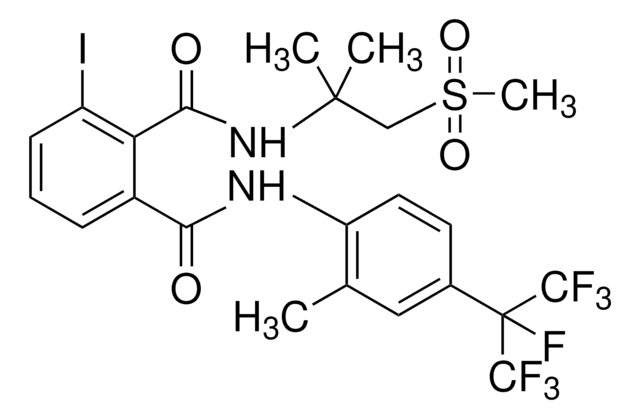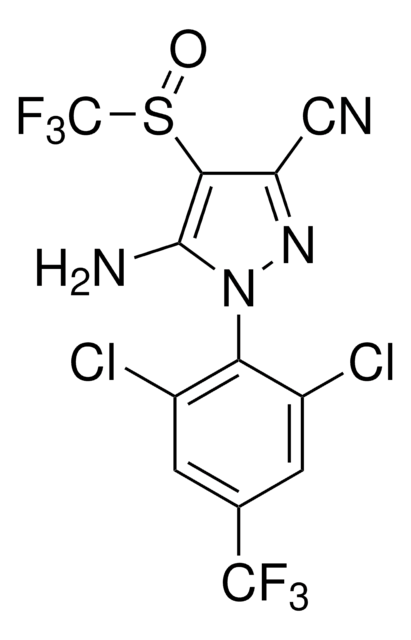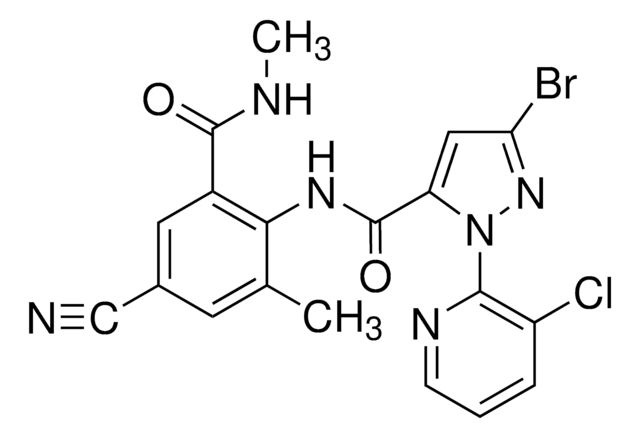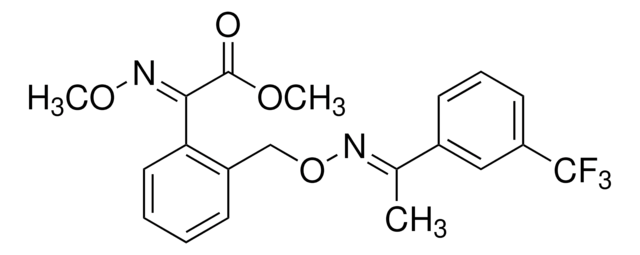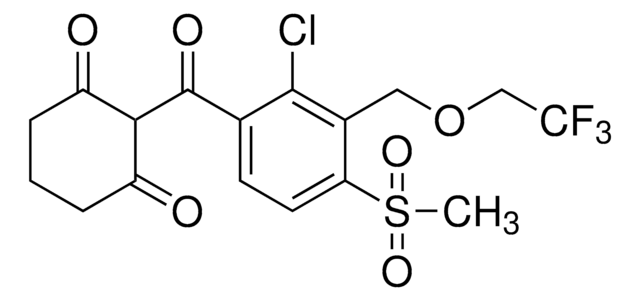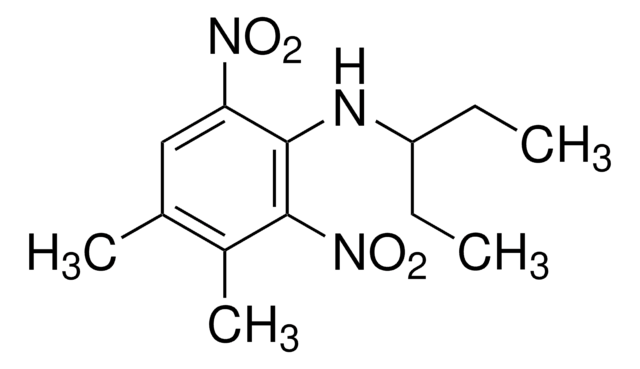Key Documents
32801
Flubendiamide
PESTANAL®, analytical standard
Synonim(y):
N2-[1,1-Dimethyl-2-(methylsulfonyl)ethyl]-3-iodo-N1-{2-methyl-4-[1,2,2,2-tetrafluoro-1-(trifluoromethyl)ethyl]phenyl}-1,2-benzenedicarboxamide
About This Item
Polecane produkty
klasa czystości
analytical standard
Poziom jakości
linia produktu
PESTANAL®
okres trwałości
limited shelf life, expiry date on the label
metody
HPLC: suitable
gas chromatography (GC): suitable
Zastosowanie
agriculture
environmental
format
neat
ciąg SMILES
Cc1cc(ccc1NC(=O)c2cccc(I)c2C(=O)NC(C)(C)CS(C)(=O)=O)C(F)(C(F)(F)F)C(F)(F)F
InChI
1S/C23H22F7IN2O4S/c1-12-10-13(21(24,22(25,26)27)23(28,29)30)8-9-16(12)32-18(34)14-6-5-7-15(31)17(14)19(35)33-20(2,3)11-38(4,36)37/h5-10H,11H2,1-4H3,(H,32,34)(H,33,35)
Klucz InChI
ZGNITFSDLCMLGI-UHFFFAOYSA-N
Szukasz podobnych produktów? Odwiedź Przewodnik dotyczący porównywania produktów
Opis ogólny
Zastosowanie
Informacje prawne
Hasło ostrzegawcze
Warning
Zwroty wskazujące rodzaj zagrożenia
Zwroty wskazujące środki ostrożności
Klasyfikacja zagrożeń
Aquatic Acute 1 - Aquatic Chronic 1
Kod klasy składowania
11 - Combustible Solids
Klasa zagrożenia wodnego (WGK)
nwg
Temperatura zapłonu (°F)
Not applicable
Temperatura zapłonu (°C)
Not applicable
Środki ochrony indywidualnej
Eyeshields, Gloves, type N95 (US)
Wybierz jedną z najnowszych wersji:
Masz już ten produkt?
Dokumenty związane z niedawno zakupionymi produktami zostały zamieszczone w Bibliotece dokumentów.
Klienci oglądali również te produkty
Nasz zespół naukowców ma doświadczenie we wszystkich obszarach badań, w tym w naukach przyrodniczych, materiałoznawstwie, syntezie chemicznej, chromatografii, analityce i wielu innych dziedzinach.
Skontaktuj się z zespołem ds. pomocy technicznej
